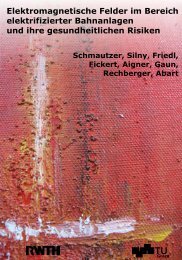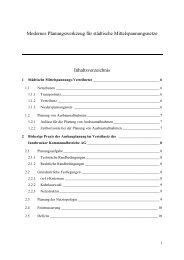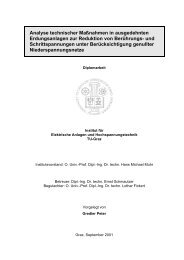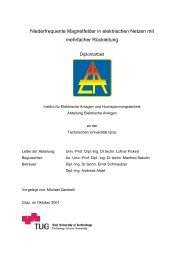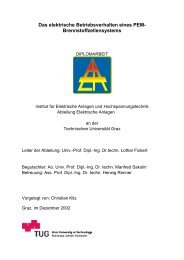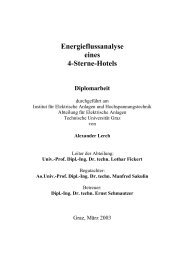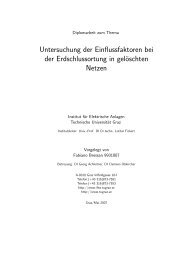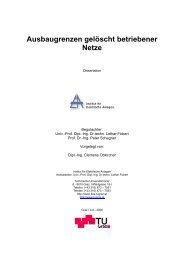Development of a wavelet-based algorithm to detect and determine ...
Development of a wavelet-based algorithm to detect and determine ...
Development of a wavelet-based algorithm to detect and determine ...
Create successful ePaper yourself
Turn your PDF publications into a flip-book with our unique Google optimized e-Paper software.
7.2. ANALYZATION OF THE DISTURBANCES 55<br />
j: <strong>wavelet</strong> decomposition level<br />
deviation_energy: Deviation between the energy distributions <strong>of</strong> the signal in<br />
study <strong>and</strong> its corresponding pure sinusoidal wave signal, at<br />
each <strong>wavelet</strong> decomposition level<br />
energy: energy distribution <strong>of</strong> the signal in study<br />
reference_energy: energy distribution <strong>of</strong> the pure sinusoidal signal version<br />
reference_energy(7): energy concentrated at the level 7 (which concentrates the<br />
highest energy) <strong>of</strong> the pure sinusoidal signal version.<br />
As will be shown in the next section, the deviation <strong>of</strong> the distributed energy curve <strong>of</strong><br />
the signal in study <strong>and</strong> the pure sinusoidal version <strong>of</strong> every particular power quality<br />
disturbance has an unique pattern that can be used <strong>to</strong> identify the origin <strong>of</strong> a voltage<br />
disturbance.<br />
7.2 Analyzation <strong>of</strong> the disturbances<br />
7.2.1 Detecting <strong>and</strong> localizing in time a disturbance<br />
The <strong>wavelet</strong> which is used for this study was the "Daub4", which is shown in figure 7.1<br />
The figure ?? shows a voltage which was dis<strong>to</strong>rted by a capaci<strong>to</strong>r switching.<br />
Figure ??(a) is the voltage which is analyzed. Figure ??(b) is the <strong>wavelet</strong> approximated<br />
coefficient for level 5, (c) (d) (e) (f) <strong>and</strong> (g)are the the detailed versions for levels 5,4,3,2<br />
<strong>and</strong> 1. The detailed level 1 (figure ??(g)) <strong>of</strong> the transformed signal clearly shows a peak<br />
at t=400ms. The other <strong>wavelet</strong> levels have also experienced variations at the same time.<br />
This implies that some transient phenomena has occurred at this time. Therefore, it can<br />
be said that the disturbance has been <strong>detect</strong>ed <strong>and</strong> located in time. However this figure<br />
brings no sufficient evidences <strong>of</strong> what kind <strong>of</strong> disturbance occurred <strong>to</strong> this signal.



